The most horrifying thing about Halloween for me is the fact that Christmas decorations appear in stores at the same time! Ack! There are two “silly seasons” in the year, one in May-June as the school year wraps up, and one that starts with Halloween and ends with New Years Eve. Through November and December, weekends will be filled with holiday gatherings big and small, and the words “Pot Luck” will be thrown around with wild abandon.
When I was a little girl, it was common to “drop by”, unannounced, to visit any friend or relative that crossed your mind. This practice always filled me with horror on behalf of the unsuspecting hostess, who might have had other plans (like a nap). I was amazed that our car never passed the target relative’s car en route, each headed for each other’s home.
There are two approaches to readying yourself for the unrelenting visiting season. One is to stock your freezer. If, however, your freezer is a tiny compartment at the top of your fridge, this may not be practical. The other approach is to have a few reliable recipes on hand that can be whipped up at a moment’s notice, perhaps even while the visitor is sitting in your kitchen, drinking the “good” coffee and chatting. I offer you a very versatile cake recipe, and plenty of ways to use it.
This is a dense cake, almost a muffin, but more rich and tender. I wouldn’t use the term “healthy alternative” when describing it. It’s a cake for entertaining – enjoy it for what it is. The “easy” part is that you don’t need any special equipment – just measuring stuff and a spoon.
Practical Basic Cake
Ingredients:
- ¼ cup butter, melted and cooled
- 1 cup flour
- ½ cup granulated sugar
- 1 teaspoon baking powder
- Pinch of salt
- 1 egg, beaten
- ½ cup milk
- 1 tsp vanilla

If you have yogurt or sour cream on hand, you can use it in place of the milk.
I didn’t test this with gluten-free flour, but I suspect it would work just fine. Make sure there is xanthan gum in the flour blend, or add some according to the directions on the package (1/2 teaspoon per cup of flour is usual). If you don’t, the cake will likely be very crumbly.
If dairy is a problem, it’s possible to use vegetable oil in place of butter, and any kind of non-dairy milk, and still get a pretty nice cake.
Method:
There are MANY ways to use this batter. Since I am almost always making this cake for someone else, I like to bake it up in a disposable foil pan. The deep 8 x 6” ones that come with a lid are perfect. The foil 8 x 4” loaf pans work very well too. You can use your conventional baking pans, of course, but I’ll warn you now that the standard 8” square cake pan will make a very thin cake. You can make 7 or 8 regular-sized cupcakes from this amount of batter, depending on how many interesting things you add. You may get as many as 18 mini-cupcakes.
Prepare your baking pan with non-stick spray. Spray-on non-stick products that are specifically formulated for baking are well worth the investment. They replace the “grease and flour the pan” directive with a single spritz. Check the lable if gluten is a concern — non-stick sprays specifically for baking can contain wheat flour.
Use paper or silicone liners for cupcakes. These are not muffins — they will stick. Don’t over-fill your muffin liners: this is not muffin batter, and it will make a mess if it overflows.
Preheat the oven to 350°F. The toaster-oven works very well for this small recipe. Mine is a convection oven all the time, which means it stirs the air around while baking is happening. “Convection” speeds the baking time, and while that is a wonderful thing, stuff can burn before you know it. If YOU are using convection, drop the temperature setting by 25 degrees (325°F) and check for doneness earlier than the recommended time.
Melt the butter, so it can cool while you do the next steps. (Very hot butter can actually cook the batter it contacts, making lumps, so don’t take it right out of the microwave and toss it in the bowl.)

Combine all the dry stuff in a bowl.
You can either mix all the wet stuff in another little bowl, or pour the milk, beaten egg and vanilla right into the centre of the dry ingredients.
Once you have added the wet stuff to the dry stuff, stir until just combined. Enthusiastic stirring will give you a tough cake, just like you were told in home ec on muffin making day.
Add the cooled melted butter, stirring until it’s completely incorporated. That will smooth out any lumps.
This is a small recipe. If you don’t measure carefully, or do a little measuring of wet ingredients in dry measuring cups, or vice versa (and who hasn’t done that), your batter may be a bit thicker or thinner. Thinner is not a big problem — maybe you used a really big egg. If the batter is really thick, add another tablespoon of milk.



Pour the batter into the prepared pan, leveling the top if the batter is thick.
Bake until fully set and golden: a toothpick inserted in the center should come out with no uncooked batter in evidence.
Baking time will depend on whether you make a cake, a loaf, or cupcakes, and whether or not you add extra ingredients. Cupcakes take the least time and a loaf takes the longest. Start checking at 15 minutes for cupcakes, 20 minutes for a cake, and 30 minutes for a loaf. Check at 5 minute intervals after that.
When done, cool your cake in the pan on a wire rack for about 10 minutes before attempting to turn it out.




Coffee Cake Option
I use this batter to make coffee cake when someone calls and I spontaneously invite them over, only to remember, as I’m hanging up the phone, that I have nothing on hand to offer them when they arrive. The addition of Streusel is the key.
Streusel
- 1 part sugar (brown or white)
- 2 parts cold butter
- 2 parts flour
If you find this kind of description confusing, think of it as 1 Tablespoon sugar, 2 Tablespoons butter, 2 Tablespoons flour. If you were making a giant cake, it would be 1 cup of sugar, 2 cups of butter, 2 cups of flour. If you weren’t confused, I apologize for this interruption.
Rub everything together with your fingers until the mixture forms crumbs. Streusel can be flavored with any “warm” spice, like cinnamon, cardamom, ginger, cloves, nutmeg, or any combination of those. You can add lemon or orange zest. You can add very finely chopped nuts or coconut as well, or you could add crushed cereal if you don’t have anything else in your cupboard. Lots of folks add oatmeal.






Make a little or a lot, depending on how you want the cake to look — deliciously craggy and crusty, or lightly dusted. If you make 1 cup of streusel, you can put half your batter into the pan, sprinkle it with half the streusel (or put in a layer of jam or marmalade—now there’s an idea!), spoon on the rest of the batter and sprinkle more streusel on top. Lots of options!
One of the advantages of coffee cake is that no icing or sauce is required. If you use an 8-inch round cake pan, you can serve the cake in wedges – very fancy, outstanding if served warm. If you drizzle a little glaze over the top (icing sugar, vanilla, milk), people will call you “Sara Lee”.
Loaf Cake Option
While this recipe makes a very nice plain loaf cake, you can fold ½ to 1 cup of anything you like into this batter to fancy it up. Coconut, Grape Nuts cereal, dried fruit like raisins (sorry Robin) or dried cranberries or blueberries, chopped nuts or seeds. Lemon zest is always a good addition with dried fruit. Did you know the seeds in “Seed Cake” (like you hear about on “Miss Marple”) were caraway? Sounds weird, but maybe it’s worth a try. Fennel seeds are often paired with orange zest.
I added some finely chopped apple and cinnamon to this batter. The loaf turned out very well – rich and moist.






Chocolate Party Cake Option
If you need a small “instant” birthday cake, this recipe is your answer.
You can make chocolate cake by taking out 2 Tablespoons of flour and replacing them with 2 Tablespoons of unsweetened
cocoa. Alternatively, you can melt ¼ cup of chocolate chips with the butter and stir that in. Works either way. Stir in extra chocolate chips, because there’s no such thing as too much chocolate in a celebration cake.
Add some frosting (1 cup icing sugar, 1 Tbsp soft butter, 1 Tbsp milk, splash of vanilla, food coloring of choice, or a tablespoon of unsweetened cocoa), maybe some sprinkles, and candles, and you’re good to go. Wait until the cake is fully cool before frosting it, or the frosting will melt. If you can’t wait, melt 1 cup of chocolate chips with ¼ cup of whipping cream, stir until glossy, and float that over the top of the cake right in the pan. Nobody cares if that ever sets up.




The best thing about this basic cake is that you are likely to have the ingredients on hand, no matter what. How far you choose to take it depends entirely on what’s in your cupboard, and how imaginative you are!




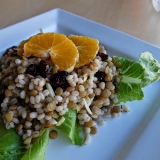
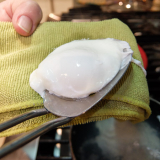
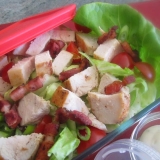
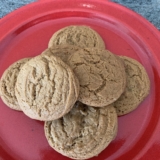
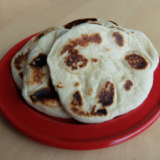
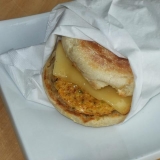
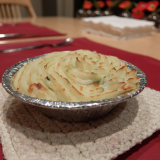
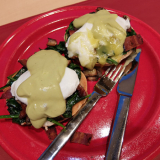
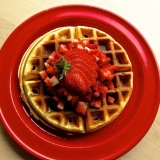
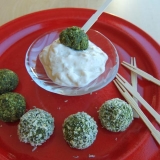
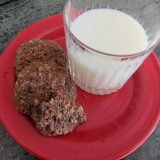
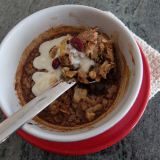

Leave A Comment